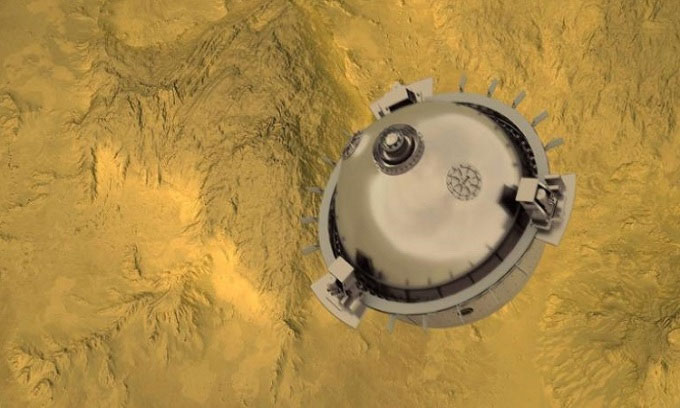NASA spacecraft is about to fly through Venus' hellish atmosphere

The probe will experience scorching heat and extreme pressure before landing on the surface of Venus.
Dubbed DAVINCI (Deep Atmosphere Venus Investigation of Noble gases, Chemistry and Imaging), it will be the first mission to study Venus both by flyby and landing. The spacecraft is expected to explore the multi-layered atmosphere of Venus and reach the planet's surface in June 2031. The DAVINCI mission was able to record data on Venus that scientists wanted to measure since the early 1980s.
Essentially, the DAVINCI spacecraft will act as a flying chemistry laboratory, able to measure various aspects of Venus's atmosphere and weather, and take the first pictures of the planet's highlands. crystal during landing. The mission's instruments can map the surface of Venus and detect the composition of the highlands. The feature called "tesserae" may be similar to a continent on Earth, meaning Venus may have plate tectonics, according to NASA scientists.
"The full set of chemical, environmental and lander data will provide a picture of Venus's layered atmosphere and how it interacts with the ground in the Alpha Regio Mountains twice as large as Texas," Jim said. Garvin, DAVINCI project leader at NASA's Goddard Space Flight Center in Greenbelt, Maryland. "The results will allow us to assess atmospheric history as well as detect special rocks at the surface such as granite, looking for features that reveal erosion or other forming processes."
The mission also investigated the possibility of an ocean in the past by Venus by measuring the gas and water composition in the deepest reaches of the atmosphere. Venus may be the first habitable planet in the solar system, containing oceans and a climate similar to Earth. For some reason, Venus has become a hot enough planet to melt lead.
It is possible that Venus once maintained a stable temperature and contained liquid water for billions of years before an event spurred dramatic changes on the planet, according to a 2019 study. Today, Venus is close. like a dead planet with a toxic atmosphere 90 times thicker than Earth and a surface temperature of up to 462 degrees Celsius.
As DAVINCI passes Venus several times, the spacecraft will use two instruments to study the clouds and map the highlands from orbit. Then, DAVINCI will drop a probe carrying 5 instruments to the surface. The landing process will take about an hour and a heat shield will be used to protect the probe until it is 67 km above the ground. The craft will then remove the shield to collect samples and analyze the gas in the atmosphere. The probe will also take hundreds of pictures after passing through the Venusian clouds 30,500 meters above the ground.
According to Stephanie Getty, deputy head of the research team, the probe will land in the Alpha Regio Mountains but will not need further operation because all scientific data has been collected before landing. If the craft overcomes the fall at 11 m/s, it could spend about 17-18 minutes on the surface of Venus under ideal conditions.
- NASA simulates Venus's hellish environment
- NASA simulates spacecraft falling into 'hell' of Venus
- Snow rain on Venus
- NASA wants to bring people to Venus
- Venus suddenly turned slower
- Venus Experss are about to plunge into the Venusian atmosphere
- Decode the formation of SO2 gas on Venus's atmosphere
- Century astronomical banquet: Venus passes through the Sun.
- Venus can stay?
- Venus is the space ship killer
- Ozone in Venus's atmosphere
- Interesting 'meeting' between Venus and the sun
 Vietnam 5th Asian champion on fuel-efficient vehicles
Vietnam 5th Asian champion on fuel-efficient vehicles We can read all NASA studies completely free of charge
We can read all NASA studies completely free of charge Singer and songwriter Bob Dylan won the 2016 Nobel Prize for Literature
Singer and songwriter Bob Dylan won the 2016 Nobel Prize for Literature Scientific revolution in Asia
Scientific revolution in Asia